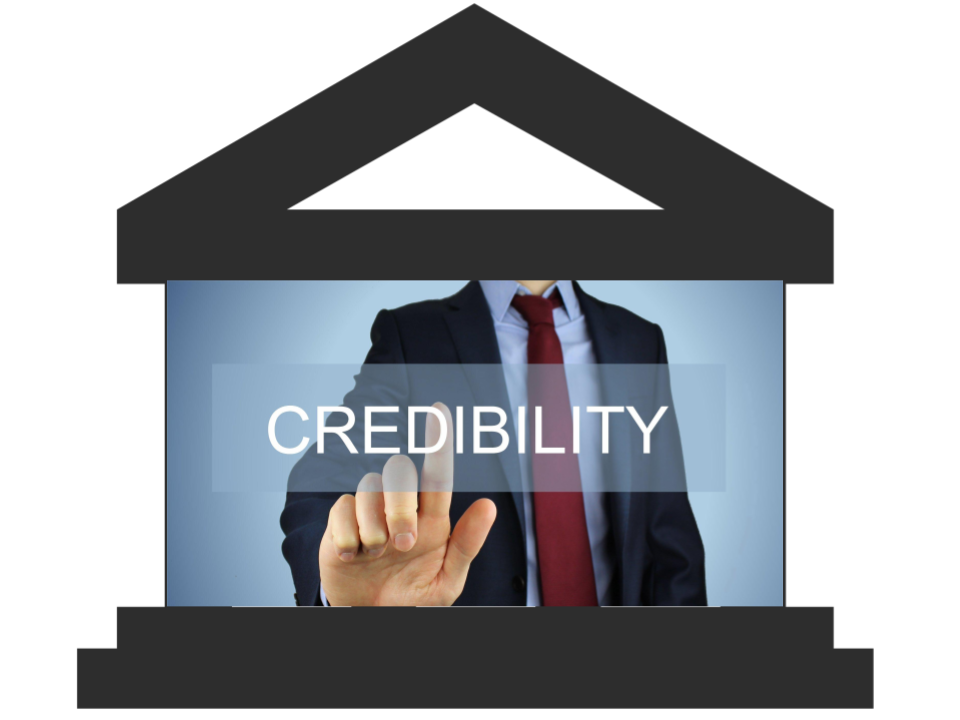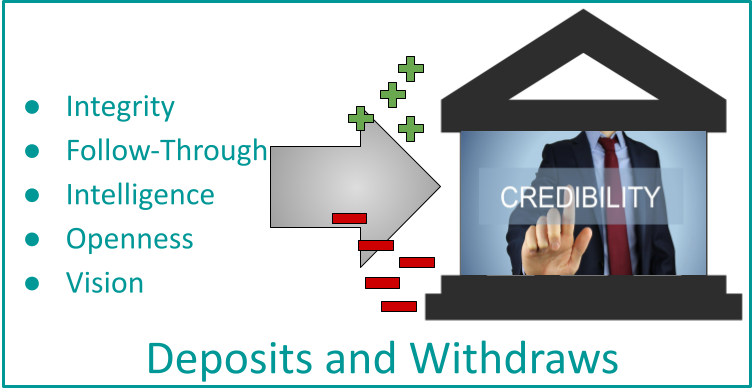The Credibility Bank
The Problem Team
Nearly every time I have been hired into an organization, it is because there is a problem that the existing leadership has been judged unable to solve, or better, nobody in the existing organization wanted to touch.
I took just such a challenge early in my managerial career when I was hired to manage a team in a new company that seemed to be at odds with every other group in the organization. There was a massive product release, and this team was responsible for a critical component that everyone was dependent upon. They were late in delivering and seemed to have negatively charged interactions. Yelling was not uncommon in the various coordination meetings.
Bringing me onto the team, I started working through the problems and listening to all the expectations. The team had some strong people but their morale was low, as they were feeling disrespected by other organizations and gloomy at their current difficulties.
Five most Desired Traits in Leaders
The good news, being new, I had a bit of a honeymoon with the executive team. Furthermore, they believed in leadership skills so early on, I found myself in a company sponsored seminar from James Kouzes, famous for the book, The Leadership Challenge.
He began his talk handing out a sheet to the audience of nearly 200 managers and executives. The sheet had 40 attributes that people might expect in their leaders. Words like “charisma”, “loyalty”, “decisiveness”. We were asked to identify the top ten attributes we might think were important in anyone we would want to work for. We marked up our sheets and turned them in.
As he tallied up the scores, he remarked that the top five attributes our group had selected, was identical to the top-five he got with nearly every group he’s lectured from locations all over the world. These 5 attributes are as follows:
Integrity
Follow-Through
Intelligence
Openness
Vision
There are a lot of books on leadership and management that can overwhelm you with things to think about in your role, giving you way more to pay attention to than one can keep in one’s head at a time. However, these five attributes of a leader resonated with me in a profound way.
The Credibility Bank
What I realized is that credibility is like a bank account. Each day, you are making deposits or withdrawals. At any given moment, your current balance in your Credibility Bank Account, is an indicator of how much people trust you.
My team had been making withdrawal after withdrawal. They missed their deadlines over and over. They had set an original plan that was impossible to achieve, demonstrating lack of maturity in thinking and decision making. They got defensive when pressed. And there were demonstrations of undeserved arrogance and abusive behavior. It was of little wonder nobody trusted this group.
So what I told the team was that the only way to get out of this situation was to just think of this as an incremental process.
With respect to integrity, every day, we do our best to be honest with people about schedules and plans. If we’re slipping, we would say so. If we’re wrong about something, we would be the first to admit it.
Following-through meant we had to do our absolute best at living up to our commitments, making forward going plans as realistic as possible, creating minimum viable fallback versions of our deliverables and then incrementally completing and stabilizing what we had promised.
To demonstrate intelligence, we had to find and promote the smartest ideas. It also means avoiding being blindsided by myopic thinking and stupid mistakes. To do our best here, we discuss and converge on solutions that were not only optimized for the schedule but also were in the best interest of the customers.
To demonstrate openness, we solicited feedback from stakeholders in other groups and publicly acknowledged our past transgressions. Moreover, we needed to communicate plans and issues so there is no question about what we were thinking and doing.
For vision, I saw my job as a leader to not produce the vision, but leverage the smart people on the team and in other groups to figure out where we should be going and then become the beacon of that shared strategy.
Applying the Credibility Bank
What I told my team is that there is no way to snap our fingers and have credibility with the organization. All we could do is think, every day, about these attributes and act in ways that made deposits instead of withdrawls. It is a hopeful orientation if your credibility is low because it gave us a way of working out of our credibility deficits. It was also a cautionary model because it means that you can easily erode credibility by demonstrating poor decision making, being in denial about your problems, not communicating your plans or just failing to make your commitments. The biggest way to lose credibility is through dishonest behavior; integrity withdrawals having the biggest impact.
As I took this to heart, I had two employees who were a significant part of my problem. One guy was just very poor at getting things done. The other had worked himself into a critical role and, believing he was unfireable, had behaved arrogantly and was the source of most of the friction we had with other teams.
Previous managers were so worried about the schedule, they kept these two problem people around, fearing the impact if these two were let go. As the new manager of the team, I realized that this was a key moment of follow-through for me. So despite feedback from the prior manager, I fired them both. To my delight, productivity in the team actually went up. The talented people were starving for someone to address these problems and, for the first time, someone actually did. Right away, people stepped into the breach, picked up tasks left by these two departures, and engaged more aggressively on making the project goals.
Soon after, this strategy was put to another test. For our plan of record, the feature set was too ambitious for the timeframe we had to deliver it. The overall organization scheduled a big review and I had to present our status. Before I began, I looked around at the faces of other team members from across the organization. Senior managerial and technical leadership were there. I could see scowling around the room. They knew our team wasn’t going to make the big deadline.
I stood up there and told the truth. We weren’t going to make the schedule. But then I followed with what we were going to do about it. I had a revised plan that drastically simplified the architectural target, trimming back some functionality while also bringing a lot more predictability going forward. I was expecting a wave of frustration and anger. Instead, I saw people smiling. They had been accustomed to excuses and denials. Having someone acknowledge the truth of the situation and come up with a reasonable fallback that was achievable was a fresh and welcome change.
Epilogue
Within a year from establishing this new approach, the team had delivered on our adjusted commitments. The resulting product, while missing some capabilities that were originally envisioned, was still making strong inroads with customers and sales. Moreover, the team, accustomed to working collaboratively and predictably, was now taking on more of a leading role within the organization. For me, I was being given more responsibility and voice . This simple model of the Credibility Bank made such an impact, I go back to it regularly to help me understand what actions I need to take that I might be avoiding, or what could explain growing mistrust that I need to correct. It not only has been useful in managerial situations, but also, with customers, with stakeholders, and with my personal relationships.

